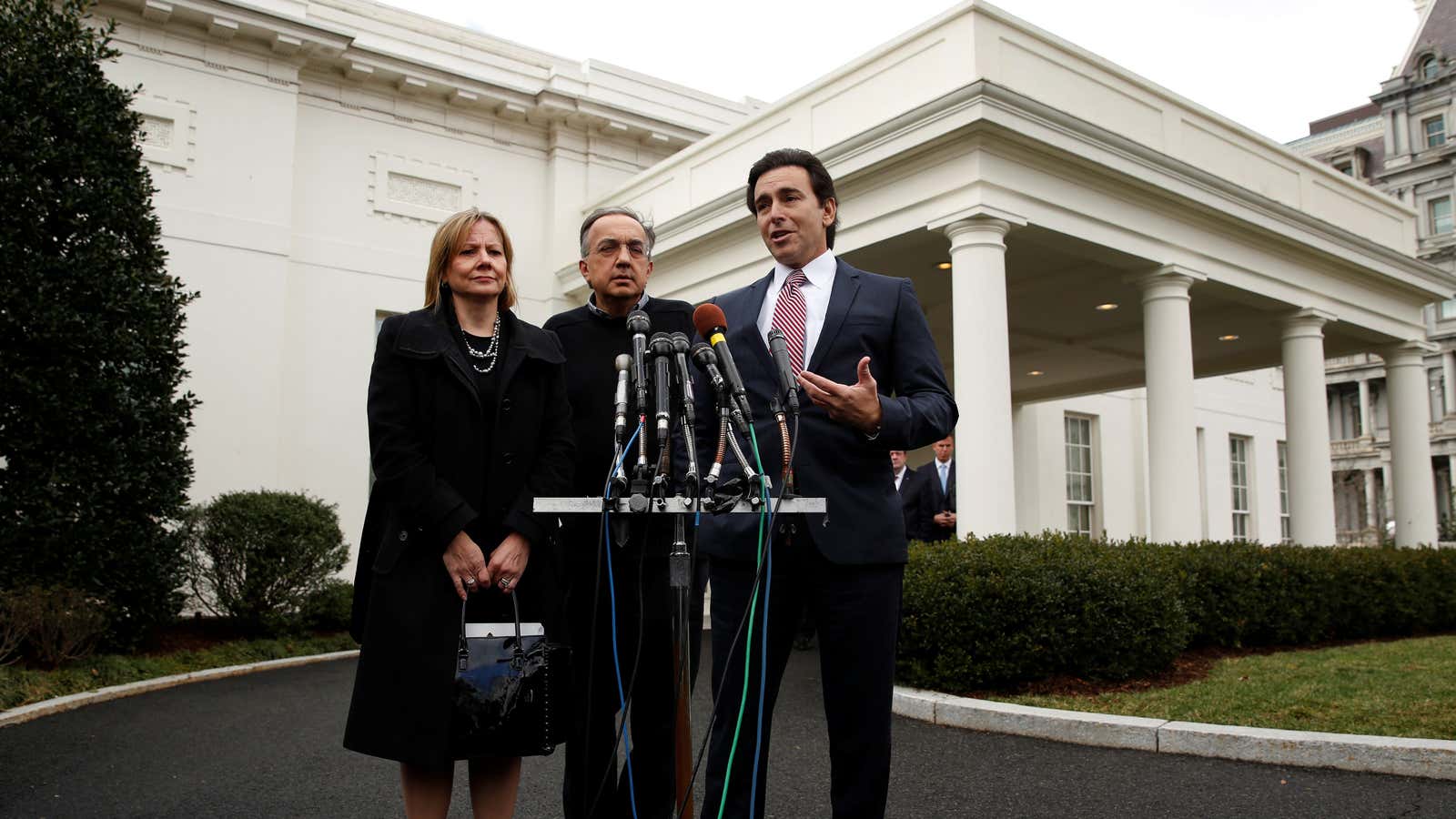In the first 100 days of the Donald Trump administration, there’s been a steady procession of CEOs traveling to the White House. While some companies have suffered blowback from unhappy customers and employees from meeting with the president, it’s a sound business strategy.
Companies whose executives meet with the president and high-ranked White House officials have better-performing stocks, receive more government contracts, and are burdened by fewer regulations, according to a new study from a pair of business professors at the University of Illinois.
It makes intuitive sense that access to political power translates into business results, but the paper is the first to quantify the actual benefits. The study was released as a working paper by the National Bureau of Economic Research, and hasn’t yet been reviewed for publication.
Finance professors Jeffrey Brown and Jiekun Huang examined White House visitor logs from the Obama administration and identified 2,286 meetings between government officials and executives from the 1,500 largest publicly traded companies.
The most-visited officials were Valerie Jarrett, a special advisor to the president; Jeffrey Zients, an economic advisor, and Obama himself, who met with executives 100 times. CEOs making the most trips include David Cote, of Honeywell, with 30 visits, and Jeff Immelt of General Electric, with 22.
Company shares rose 1% in a 51-day window surrounding a White House visit—10 days before and 40 days after—correcting for other factors that would move stock prices. The authors speculate shares are driven by media coverage of visits, and note that visits that were announced, then canceled, don’t have the same impact. CEOs need to make the trip to get the stock bump.
The companies also won more government contracts in the 12 months following a visit, compared to other companies. While the gain was small—again about 1%—it added up to about $34 million in average additional annual profits. The authors also found evidence that companies tend to receive more regulatory relief following a White House visit.
A CEO may want to boycott the White House out of principle, but in the short term, at least, it’s not good business.
